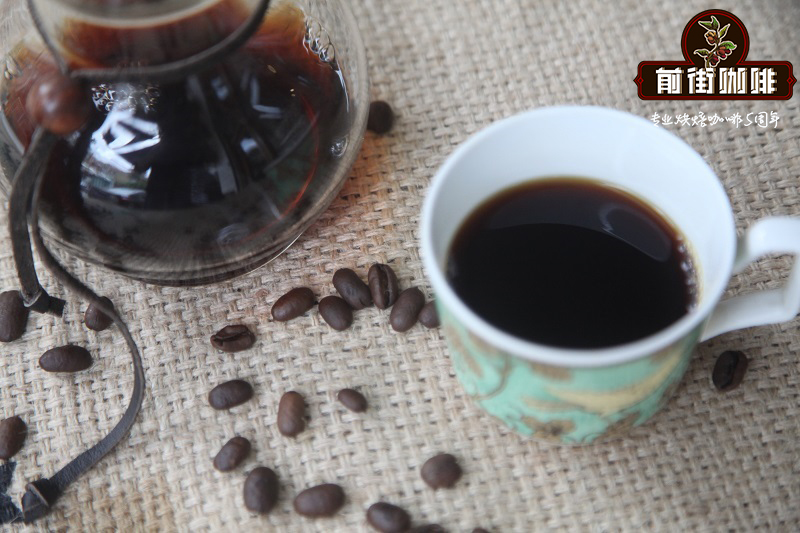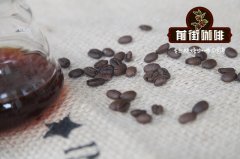Analysis of roasting and cooking parameters of raw beans of SL14 and SL28 coffee in Kexi, Uganda
Professional coffee knowledge exchange more coffee bean information please follow the coffee workshop (Wechat official account cafe_style)
Uganda
Uganda
Uganda, located at the source of the Nile, is a landlocked country in Africa that does not rely on the sea. Although Uganda has a long history of producing coffee like other East African countries, the quality of coffee has never been improved because of the war caused by ethnic antagonism. good coffee is mostly grown in areas adjacent to Kenya, and some good coffee beans are shipped to Kenya to be sold as Kenyan coffee. It was not until the end of the war 15 years ago that Uganda leapt into a fast-growing country of coffee.

Uganda is a country with lush green forests, lakes, wetlands and rivers. Coffee is the largest crop in Uganda and earns the most foreign exchange. About 500000 coffee farms are engaged in coffee-related agriculture, accounting for 25% of the total population. Coffee trees are mostly robusta coffee trees, accounting for 94%. Only 6% of coffee is a traditional Arabica tree. These rare coffee beans are grown in tropical rainforests and most of them are exported to countries around the world.

Every year, major coffee producing countries in Africa hold a national raw bean competition called "The Taste of Harvest; TOH", similar to the Cup of Excellence in Central and South America. TOH has become an arena for discovering the best coffee in Kenya, Ethiopia, Uganda and Congo.

The grading of coffee is called Q and R by experts. Coffee with a score above 80 is considered a special coffee and will automatically attract a good market or even a better price. Therefore, competition shows that good practices can benefit farmers. As part of its mission, UCDA regularly trains farmers across the country to produce quality coffee through good handling. Therefore, there are areas where high-quality coffee is produced in areas such as Kanungu,Sipi,Iganga and Luwero.

But West West Luwenzol Mountain Yagran Yi treatment Plant
This fourth-place Ugandan TOH bean is grown by farmers near Kexi.
In the 2017 harvest season flavor competition in Uganda, the "Kexi Ruwenzol Mountain Yagran Yi treatment Plant" won the fourth place, and the Ruwenzol Mountain Yagran Yi treatment Plant was treated by the sun.
Many people think that Uganda only produces Robusta, but in the Mount Elgon region of Uganda's eastern Kapchorwa province, which borders Kenya, coffee is as good as boutique Kenya. The "Kexiluwenzol Mountain Yagran Yi treatment Plant, which won fourth place in the harvest season, is located in Aigang Mountain. It was founded in 2000 and has expanded from 5000 farmers at first to more than 10, 000 farmers now." The scale of individual farmers is very small, with coffee trees ranging from 200 to 500, mixed with other crops such as bananas and soybeans, with an average farmland of only 0.5 hectares. in the past, farmers tended to use crude peeling machines to deal with fresh cherries, and after Kawa built a first-class washing plant, he strongly persuaded farmers to send cherries to the central processing plant to improve their quality.

The varieties planted by Ugandan farmers are SL14 and SL28,SL, which come from the research and development and selection of Scott Lab. Kenyan coffee is famous for SL28 and SL34, so the Ugandan government vigorously promotes and distributes SL seeds to farmers. Among them, SL14 not only has good flavor and drought resistance, but also can be harvested after planting for two years, which meets the needs of farmers.

Aigang Mountain is a still volcano. It is said that it was once the highest peak in Africa. Local people believe that gods live on the top of the mountain, far beyond the reach of mortals. When the gods are happy, there is plenty of rain and dew, the whole hillside benefits, everything grows and is green. Kawa members' coffee gardens are scattered in Aigang Mountain. After the volcanic activity ceased, a huge volcanic crater was formed at the top of Aigang Mountain, which was then saved into a lake and diverted streams to irrigate crops on the hillside. During the rainy season, the stream rises sharply, forming a spectacular waterfall, of which the waterfall of "Sipi" is the largest, falling 200m.
The Mount Zor Yagran Yi treatment Plant is the first organization in Africa to participate in an organic sustainability program, and the Hibby Organic Project was launched in 2002, becoming the first coffee in Africa to receive UTZ CERTIFIED certification. Compost is used for good shading. Kawa's washing plant is equipped with first-class equipment and focuses on handling cherries sent by farmers. on the same day, the peel and pulp are mechanically removed and strict washing procedures are followed.

02 | processing method
Treatment method: sun Natural
Uganda not only does washing treatment, but also does micro-batch sun treatment, first removing unqualified floating beans, and then sun-drying for 3 weeks, during which the fresh fruit is constantly turned to avoid fermentation or mildew, in order to achieve a very clean and rich flavor.

03 | Analysis of raw beans
Ugandan varieties are SL14 and SL28.
Coffee varieties include Scott Labs Select 14 (the most common variety in Uganda) and 28 (SL14, SL28), both of which are descended from the French missionary bourbon. SL14 is a disease-and drought-resistant variety, while SL28 is more common in Kenya.
The bean body is longer, the green is yellowish, and the particle size varies greatly.

Uganda has the same rating as Kenya:
PB: peaberry
AA Plus-plus:
AA plus
AA: Screen 17 and 18 (sieve: 17, 18 mesh = 7.2mm)
AB: screen 15 and 166.6 mm (sieve: 15,16 mesh = 6.6 mm)
C:
E:
TT: light beans screened by airflow from AA and AB levels

04 | Baking analysis
This coffee has smaller particles, higher density, more heat absorption during baking and faster Mena reaction. In the first batch of roasting, the temperature of the beans was 210 degrees higher, and I kept exerting firepower before the coffee beans were dehydrated and yellowed to ensure that there were enough calories to last until the end of the baking.
The temperature of the bean is 200 degrees, and the firepower is relatively small, and the firepower is gradually increased according to the need in the baking process. Under this method, the dehydration time of coffee is longer than that of the first batch, and the heating rate is 6-8 degrees every 30 seconds.

This Ugandan coffee, in the roasting stage, uses a smaller initial firepower of 170 degrees and a slower baking rhythm to express the multi-layered flavor of this coffee.

Roaster Yangjia 600g semi-direct fire
Furnace temperature to 200 degrees Celsius into the pot, throttle open 3. After 5, 30 seconds, the firepower was adjusted to 170 degrees, the throttle was unchanged, and the firepower was adjusted to 168 degrees at the return point of 1: 36 degrees. At this time, the bean watch turned yellow, the smell of grass completely disappeared, the dehydration was completed, the firepower was adjusted to 130 degrees, and the throttle was adjusted to 4.
At 8'45, ugly wrinkles and black markings appear on the bean surface, and the smell of toast obviously changes to the smell of coffee, which can be defined as a prelude to an explosion. at this time, listen carefully to the sound of the explosion point, to 9: 07 "start an explosion, adjust the firepower to 80 degrees, the throttle should be fully opened 5 (the firepower should be very careful, not so small as to be free of bursting sound), 1: 50" after explosion, 198.4 degrees pan.


Cup test:
Dry fragrance is wine, roasted melon seeds, wet fragrance has a sense of sweet orange juice, sipping for citrus, berries and other fruit flavor, acid value clear and bright, smooth texture. , spices, wood, complex taste.

05 | Cooking analysis
Recommended cooking methods: siphon, hand flushing
Degree of grinding: 3.5 (Fuji R440, Japan)
Water temperature: 89 °C
V60 filter cup, 15g powder, water temperature 89-90 degrees, grinding 3.5.The ratio of water to powder is close to 1:15.
Steaming in 30 grams of water for 30 seconds
Segment: water injection to 100ml cut off, slow water injection to 225ml
That is, 30-100-95
Other suggestions for trickling extraction:
Normal pressure, recommended grinding degree of 3.5-4 / water temperature 90 °C
Philharmonic pressure, recommended 2.5 grinding degree, water temperature 88 °C
Hand punch: 3.5 degree of grinding, water temperature 89 °C
3.5 Grinding-90 degrees water temperature
Bean grinder
Grinding degree
Powder quantity
Filter cup
Little Fuji
3.5
15g
V60
Water temperature
Stuffy steam
The second stage of water quantity
The third stage of water quantity
Total time 1:50
89 degrees
30g water for 30s
100g 1:00
95g
Total amount of water: 225
Sweetness: ☆☆☆☆

Important Notice :
前街咖啡 FrontStreet Coffee has moved to new addredd:
FrontStreet Coffee Address: 315,Donghua East Road,GuangZhou
Tel:020 38364473
- Prev

Distinguishing the effects of different hedge cooking parameters between sun Yega and water-washed Yega Xuefei-treatment
Professional coffee knowledge exchange more coffee bean information Please follow the coffee workshop (Wechat official account cafe_style) Today's protagonist is Yega Xuefei, the most common in the sun and water, because the treatment methods are different, so the two brewing methods are not the same. The difference between the appearance of sun-washed and washed coffee beans from the observation of silver skin in the process of processing
- Next

Brand introduction-which brand of Vietnamese coffee beans is G7 coffee the best coffee beans in Vietnam?
Professional coffee knowledge exchange more coffee bean information please follow the coffee workshop (Wechat official account cafe_style) Vietnamese coffee Vietnam location is very conducive to coffee cultivation, Saigon coffee products used in each bean, are selected from the best coffee areas in the Vietnamese plateau, with special cream refined baking, outstanding cream, coffee mellow, coffee
Related
- Detailed explanation of Jadeite planting Land in Panamanian Jadeite Manor introduction to the grading system of Jadeite competitive bidding, Red bid, Green bid and Rose Summer
- Story of Coffee planting in Brenka region of Costa Rica Stonehenge Manor anaerobic heavy honey treatment of flavor mouth
- What's on the barrel of Blue Mountain Coffee beans?
- Can American coffee also pull flowers? How to use hot American style to pull out a good-looking pattern?
- Can you make a cold extract with coffee beans? What is the right proportion for cold-extracted coffee formula?
- Indonesian PWN Gold Mandrine Coffee Origin Features Flavor How to Chong? Mandolin coffee is American.
- A brief introduction to the flavor characteristics of Brazilian yellow bourbon coffee beans
- What is the effect of different water quality on the flavor of cold-extracted coffee? What kind of water is best for brewing coffee?
- Why do you think of Rose Summer whenever you mention Panamanian coffee?
- Introduction to the characteristics of authentic blue mountain coffee bean producing areas? What is the CIB Coffee Authority in Jamaica?

